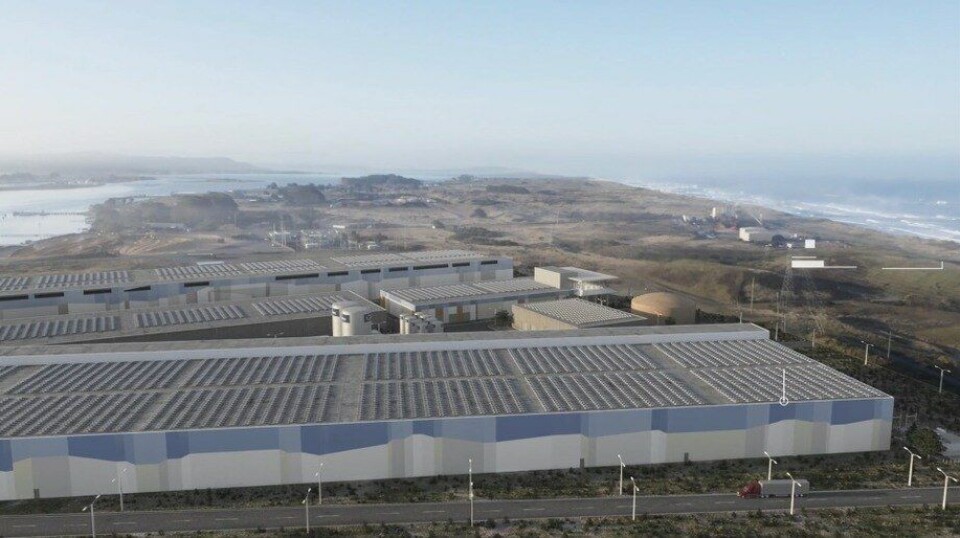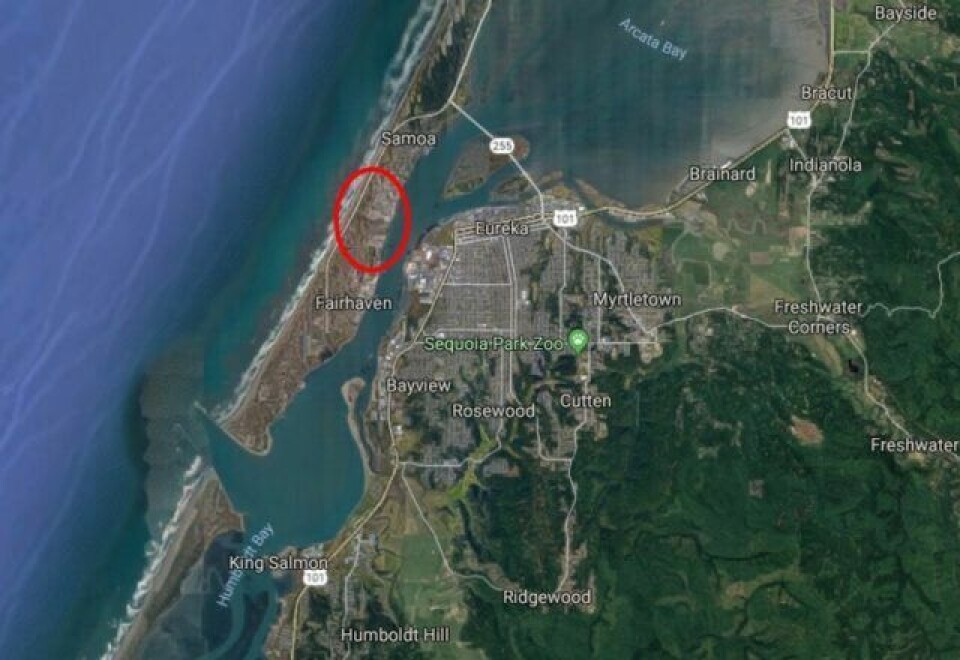
Planners set to decide on Nordic California RAS on Thursday
A decision by planners on whether to back a 33,000-tonnes-per-year on-land salmon farm in California appears likely to be made on Thursday.
Norwegian-owned Nordic Aquafarms Inc wants to build the recirculating aquaculture system (RAS) facility on the site of a former pulp mill on the Samoa Peninsula in Humboldt County.
The Humboldt County Planning Commission met last Thursday to consider certifying the project’s Environmental Impact Report (EIR) and the approval of two key permits. But after hearing a series of reports followed by nearly two hours’ worth of public comment, it didn’t have enough time to deliberate and vote on the $650 million plan, according to Lost Post Outpost (LoCO), a website for Humboldt County.

Robust conditions
LoCO reported that the assigned county planner, Cade McNamara, told the meeting Nordic’s project would be located on a high-priority brownfield site zoned for coastal-dependent industrial activity, and that the company plans to conduct further abatement and clean-up before starting construction.
One of the planning commissioners, Noah Levy, said Nordic staff had worked really hard to create a project that would set a new standard. He also observed that the county had put “a lot of robust conditions” on it, adding: “I just see our job up here as trying to make sure those conditions are adequate, within the bounds of what’s feasible, to make this the best project it can be.”
An ideal fit
Humboldt Bay Harbor, Recreation and Conservation District executive director Larry Oetker described Nordic’s plans as an ideal fit for the coastal dependent former mill property owned by the Harbor District.
“We were able to work and attract Nordic Aquafarms to come here because they recognise that this is the premier site on the entire west coast of the United States for aquaculture operations,” LoCO reporter Oetker saying.
Nordic Aquafarms Inc’s interim chief executive Brenda Chandler also gave a presentation and cited the company’s commitment to using 100% renewable and non-carbon energy, and its expectation of creating 150 full-time jobs.
LoCO reported that members of the Operating Engineers Local 3 union showed up to the meeting in force to advocate for the project, saying it would create much-needed living-wage jobs and allow them to show their children something they’re proud to have helped build.
“Nordic has come in and gone above and beyond,” said union member and recreational salmon fisher Harry Herkert. “They’re taking a dilapidated, contaminated pulp mill and they’re going to turn it into a viable industry.”
Rafael Cuevas-Uribe, a fisheries biology professor and aquaculture expert at Cal Poly Humboldt, said he’d examined the plans for the project and was impressed by its state-of-the-art technology, including an advanced fine-mesh filtration system for effluent.
“I’ve never seen a recirculating system with this type of cutting-edge technology,” Cuevas-Uribe said.
Plenty of water
John Friedenbach, general manager of the Humboldt Bay Municipal Water District, said the district’s “abundant” water, sourced from the Mad River, used to provide 65 million gallons per day to the two pulp mills that operated on the peninsula for decades. Nordic, by comparison, needs less than three million gallons per day, less than 5% of that previous demand.
There was also criticism of the plan, with members of local environmental groups advocating either additional conditions of approval or outright denial of the project, LoCO reported.
Several people said the fish farm’s saltwater intake infrastructure should be located offshore, rather than in the bay. Others faulted the EIR for making assumptions in its modelling and omitting analysis of key project components, such as the greenhouse gas impacts of its fish feed and egg supplies.
CO2 emissions
Eight separate members of the climate action group 350 Humboldt took a turn speaking, each voicing concerns about the project’s carbon dioxide emissions and the impacts on climate change.
Jessie Misha, chair of the Surfrider Foundation’s Humboldt County chapter, said the county should require Nordic to transition to zero-emission electric trucks and require fish feed with a low carbon footprint, re-evaluated annually.
Some people were also concerned about the size of project, with Jennifer Kalt, executive director of Humboldt Baykeeper, saying that if Nordic was willing to start with a smaller project and meet “clear benchmarks” before scaling up, it would “go a long way” toward addressing her organisation’s various concerns.
The Planning Commission agreed to come back next Thursday to consider everything its members have seen and heard so far.
Nordic is planning two 33,000-tonnes-per-year salmon RAS facilities, one in California and the other in Belfast, Maine, which has received already received the permissions required. Bernt Olav Røttingsnes, chief executive of the US subsidiary’s parent company, Nordic Aquafarms Group AS, told Fish Farming Expert that the company pans to start construction in Belfast next year.























































